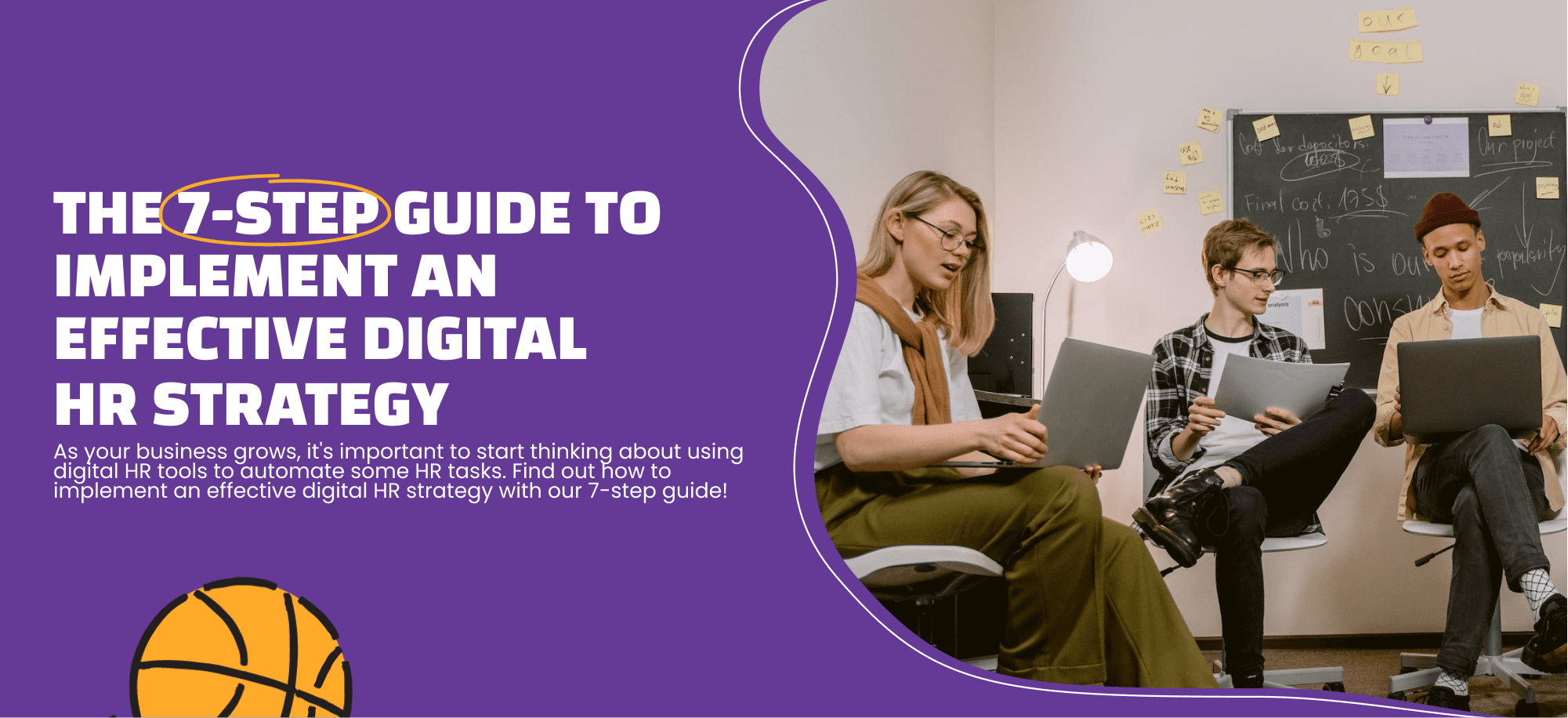If you're like most small business owners, you're wearing a lot of hats and trying to do everything yourself. But as your business grows, it's important to start thinking about how to implement an effective digital HR strategy. This guide will show you seven steps to get started. By automating some HR tasks and using technology to help manage your workforce, you'll be able to focus on what matters the most - running your business and caring for your employees!
What is a digital HR strategy?
A digital HR strategy refers to a plan that utilizes digital technology to enhance and streamline Human Resources processes. This can include implementing digital HR platforms, automating repetitive tasks, and improving communication within the workplace.
Why is it important to implement a digital HR strategy for small businesses?
Implementing a digital HR strategy can lead to numerous benefits for small businesses:
Increased Productivity
Digital HR tools can help to increase employee productivity by automating time-consuming processes such as new employee onboarding and payroll processing so that the HR team can focus on the work which truly matters, such as improving employee morale and performance.
Improved Communication
Digital HR tools can also improve communication between the company and the employees For example, digital HR tools can help employees to stay organized and on track by providing them with a central place to access all of their HR information. Additionally, online portals and chatbots can provide employees with a quick and easy way to get answers to their HR questions.
Reduced administrative cost
Digital HR strategies can help small businesses eliminate the need to hire additional resources to manage manual and time-consuming paperwork, resulting in cost savings.
Greater Flexibility
Digital HR tools also offer small businesses greater flexibility when it comes to managing their workforce. For example, online scheduling tools can allow businesses to easily adjust employee schedules as needed. Additionally, digital HR tools can help employees to better manage their time by providing them with access to their work schedule and leave balance at the click of a button.
Improved data analysis and decision making
Digital HR strategies can provide small businesses with access to a centralized pool of data, allowing for more in-depth analysis and informed decision-making.
Overall, a digital HR strategy can help an organization stay competitive in today's digital world. organization as a whole. However, it is important to ensure that digital solutions align with the overall business strategy and meet the needs of the organization and its employees. Read on to find out what are some of the key considerations while developing your digital HR strategy and also how to implement the plan successfully.
The 7-step guide to implement an effective digital HR strategy
Define your goals
The first step in creating a digital HR strategy is to define your goals. What do you hope to achieve with your HR strategy? Do you want to improve employee engagement? Increase retention rates? Attract top talent? Once you have defined your goals, you can begin to create a plan of action.
Conduct a needs assessment
The next step is to conduct a needs assessment. This will help you to identify the areas in which your HR strategy needs improvement. Are your current HR processes paper-based? Do you have an outdated applicant tracking system? Do you need help creating an employee onboarding program? Once you have identified the areas in which you need improvement, you can begin to create a plan to address them.
Find out what are the top 5 HR tasks that you can automate to reduce HR risks!
Create a budget
After you have defined your goals and conducted a needs assessment, it is time to create a budget for your digital HR strategy. How much money are you willing to invest in new HR software? How much money are you willing to spend on employee training? Once you have created a budget, you can begin to allocate funds to the various aspects of your digital HR strategy.
Shortlist potential HR tools & softwares
One of the most important aspects of a digital HR strategy is implementing new technologies. There are a number of different HR software programs available on the market, each of which can help you to automate various HR processes. When selecting an HR software program, be sure to choose one that meets the specific needs of your organization.
Learn how to choose the best payroll software for your business!
Train employees to use the new HR tools & softwares
Once you have selected and implemented new HR tools & softwares, it is important to train employees on how to use them. Many organizations make the mistake of assuming that employees will be able to figure out new software programs on their own. However, this is often not the case. Employees need clear and concise training on how to use new tools in order for them to be used effectively.
Develop HR policies and procedures
Another important aspect of a digital HR strategy is developing policies and procedures for using new technologies. For example, what types of information should be stored in an applicant tracking system? How often should employee files be updated? What is the process for requesting time off through an online portal? By developing policies and procedures, you can ensure that new technologies are used effectively and efficiently within your organization.
Find out what are the top collaboration tools that you can consider to facilitate knowledge sharing and communication!
Evaluate results
After implementing your digital HR strategy, it is important to evaluate the results. Are employees using the new technologies effectively? Has there been an increase in employee engagement? Have retention rates improved? By evaluating the results of your digital HR strategy, you can determine whether or not it is successful and make necessary adjustments accordingly
Implementing an effective digital HR strategy can seem daunting, but it doesn't have to be. By following the seven steps outlined in this blog post, you'll be on your way to creating an effective digital HR system that works for your business and your employees.
And if you're looking for a little extra help, we are always here for you. Payboy is a PSG-approved cloud-based human resource management system that offers one-stop solution to SME’s HR needs such as payroll processing, leave management, attendance tracking, shift scheduling and more. Keen to find out more? Sign up for our demo below!





















